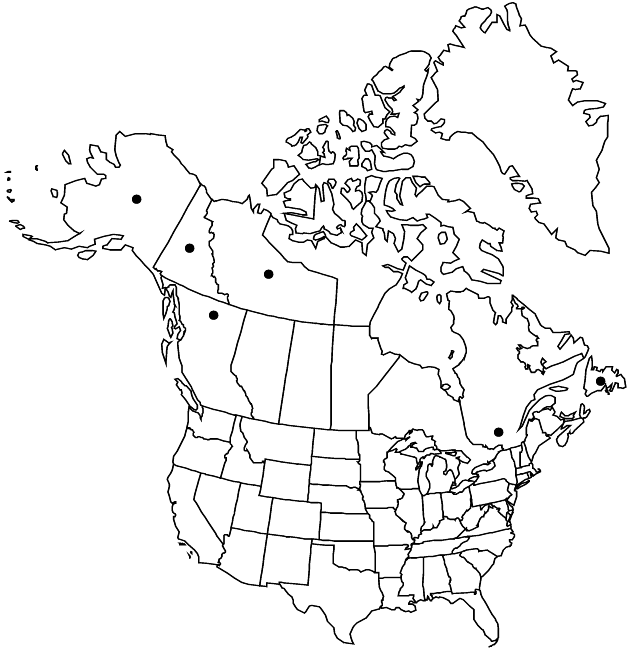Arnica griscomii
Rhodora 26: 105, plate 143, fig. 7. 1924.
Plants 5–40 cm. Stems usually simple, rarely branched. Leaves 1–4 pairs, mostly cauline; petiolate; blades elliptic, lanceolate, oblanceolate, ovate, or spatulate, 1.2–10 × 0.5–3.5 cm, margins usually denticulate to dentate, rarely entire, apices acute to obtuse or abruptly pointed, faces usually glabrous or sparingly hispidulous-puberulent, rarely stipitate-glandular. Heads usually 1, sometimes 2–3 (erect or nodding). Involucres hemispheric to campanulate-turbinate (bases sparsely to densely pilose, hairs white or yellow). Phyllaries 9–20, lanceolate to oblanceolate, not stipitate-glandular. Ray florets 6–17; corollas yellow. Disc florets: corollas yellow; anthers yellow. Cypselae brown, 2.5–6 mm, abaxially glabrous, adaxially sparsely hirsute or glabrous throughout, rarely glandular; pappi white, bristles barbellate.
Distribution

B.C., N.W.T., Nfld. and Labr. (Nfld.), Que., Yukon, Alaska, Asia (e Russia).
Discussion
Subspecies 2 (2 in the flora).
Selected References
None.
Key
| 1 | Involucre bases sparsely to moderately white-pilose; Newfoundland, Québec | Arnica griscomii subsp. griscomii |
| 1 | Involucre bases densely yellow-pilose; w North-west Territories to n British Columbia, Alaska | Arnica griscomii subsp. frigida |